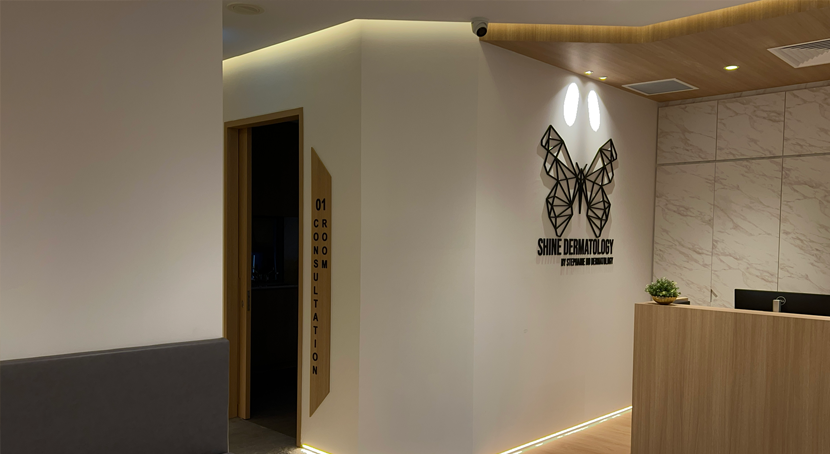What Are Mole Removal Treatments?
Mole removal refers to medical procedures designed to eliminate benign or atypical melanocytic nevi for cosmetic or health-related reasons. The appropriate method depends on the mole’s depth, pigmentation, size, and anatomical location.
Treatment Approaches by Mole Type
-
Flat Moles: Usually respond well to pigment lasers; 1–2 sessions are often sufficient.
-
Raised Moles: Surgical excision is typically recommended.
-
Raised Pigmented Moles (not suitable for surgery): CO₂ laser ablation or combined pigment and ablative laser treatments can be considered.
Available Treatments at Shine Dermatology
-
Pigment Laser Removal
Targets melanin in flat brown moles, especially junctional naevi.
Technology: Alexandrite laser (AlexTriVantage)
Best For: Flat, pigmented moles -
CO₂ Laser Ablation
Precisely vaporises raised, flesh-coloured moles with minimal damage to surrounding tissue.
Best For: Skin-coloured raised moles -
Combination Laser Therapy
Integrates pigment and CO₂ laser in a single session to treat both elevation and pigmentation.
Best For: Brown raised moles requiring aesthetic refinement -
Surgical Excision
The most definitive technique for complete mole removal, particularly for suspicious or raised lesions.
Best For: Large, atypical, or biopsy-indicated moles
All treatments are preceded by dermatoscopic examination to ensure suitability and effectiveness.
How Do These Treatments Work?
-
Surgical Excision: Involves removing the mole and surrounding tissue (2–3 mm margins), followed by layered wound closure. Provides tissue for laboratory analysis.
-
Laser Ablation: Uses targeted wavelengths (e.g., 1064 nm) to fragment melanin, ideal for superficial lesions with low malignancy risk.
-
Shave Excision: Removes the lesion flush with the skin surface using a sterile blade and electrocautery. Suitable for small, non-suspicious moles.
Treatment Summary: Techniques & Indications
|
Treatment |
Mechanism |
Best For |
Recovery |
|
Surgical Excision |
Elliptical excision with layered closure |
Suspicious or large raised moles |
Sutures out in 7–14 days |
|
CO₂ Laser Ablation |
Fractional laser vaporisation of skin layers |
Raised non-pigmented moles |
Heals in 5–7 days |
|
Shave Excision |
Dermal-epidermal level shaving with electrocautery |
Small, non-malignant raised moles |
Scabbing resolves in 7–10 days |
When Should You Consider Mole Removal?
Mole removal may be recommended for:
-
Medical reasons: Features suggestive of malignancy based on the ABCDE criteria:
-
Asymmetry
-
Border irregularity
-
Colour variation
-
Diameter >6 mm
-
Evolution or change over time
-
Physical symptoms: Itching, bleeding, or irritation (especially in friction areas).
-
Cosmetic concerns: Moles that affect self-esteem or facial appearance.
Early evaluation ensures timely intervention for potentially dangerous or evolving lesions.
Recovery Timeline & Aftercare
Each treatment method has its own healing profile:
-
Surgical Excision: One session; sutures removed in 7–14 days. Avoid sun exposure for 6 weeks. Full scar maturation may take 6–12 months.
-
Laser Ablation: 1–2 sessions; redness and scabbing usually resolve within a week.
-
Shave Excision: Minimal downtime. Antibiotic ointment is applied post-procedure until healing is complete.
To optimise healing:
-
Apply antibiotic ointment (e.g., mupirocin) for 3–5 days.
-
Use silicone gel post-healing to reduce scarring.
-
Apply broad-spectrum sunscreen (SPF 50+) daily to prevent post-inflammatory pigmentation.
Safety, Risks & Complications
While mole removal is typically safe, all medical procedures carry some risk:
-
Infection: Rare; reduced with sterile protocols and proper aftercare.
-
Scarring: Linear scars may form post-excision; managed with silicone dressings or corticosteroid injections.
-
Recurrence: Most common with superficial techniques (e.g., laser or shave excision). Surgical excision offers the lowest recurrence risk.
Shine Dermatology ensures accuracy with dermatoscopy-guided planning and histological analysis for appropriate cases.
FAQs
Q: Is mole removal painful?
A: Local anaesthesia (e.g., lidocaine) ensures comfort during surgical and shave procedures. Lasers may cause brief discomfort, mitigated by numbing cream.
Q: Will I have a scar?
A: All mole removal methods may leave a mark. Excision may result in a fine line; laser often leaves minimal scarring. Proper aftercare reduces visible scarring.
Q: Do I need to remove all moles?
A: Only those with suspicious features or those causing cosmetic or physical discomfort. Benign stable moles can be left alone.
Q: Can I remove a mole at home?
A: No. Home removal risks infection, incomplete removal, and missing signs of skin cancer. Always seek professional assessment.
Q: How do I know if a mole is dangerous?
A: Moles that change in size, shape, or colour—or bleed, itch, or grow—should be evaluated. We use dermatoscopic imaging to assess features before recommending removal.
Book a Consultation Today
Let our experienced dermatologists assess your skin concerns and recommend the most suitable mole removal treatment.
Restore skin clarity and confidence with Shine Dermatology’s personalised care.



